Jcon72
Member
Yeah, overstamped model numbers were pretty common with S&W. IIRC they used model 57 frames and overstamped them to make model 29's back when Dirty Harry created crazy demand for the 29's.
6"Without looking up the picture on Guns Int'l. myself, does that revolver have a 6" barrel? Model 34 and Model 35 are the same (both I frame), except the M34 is called the 22/32 Kit gun and has either a 2" or 4" barrel. The M35 is called the Model of 1953 22/32 Target and has a 6" barrel only. S&W never wasted anything, and probably took a M34 frame to make into a M35, so they overstamped it. Dash-1's started in 1960 on both models, the M34 was discontinued in 1991, the M35 was discontinued in 1973. For it to be an overstamped M34, that gun was made somewhere between 1960 and 1973.
When I was searching for the model 35 I did encounter some variations with the front sight. Never could find out why most had the target front sight and a couple had the the ramp sight found on the 4” barrel kit guns. Even searched the big S&W book .Wouldn't surprise me if it left the factory that way. S&W never let any leftover parts go to waste, especially a perfectly good overrun of J-frames.
I'm finding a few out there on the interwebs, all are pushing $2G.
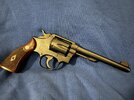
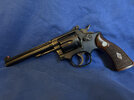
The article above mentions the S&W K22 Outdoorsman. The top one, made in 1937, is the wife's preference. Rather than bother with switching grips, I found a 1939 for me and my gnarled hands and a set of walnut Fitz target grips. Smooth and accurate even though nearly 90 years old. They are shot often.
View attachment 1187214
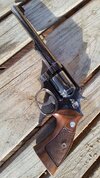
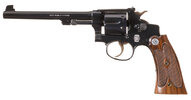
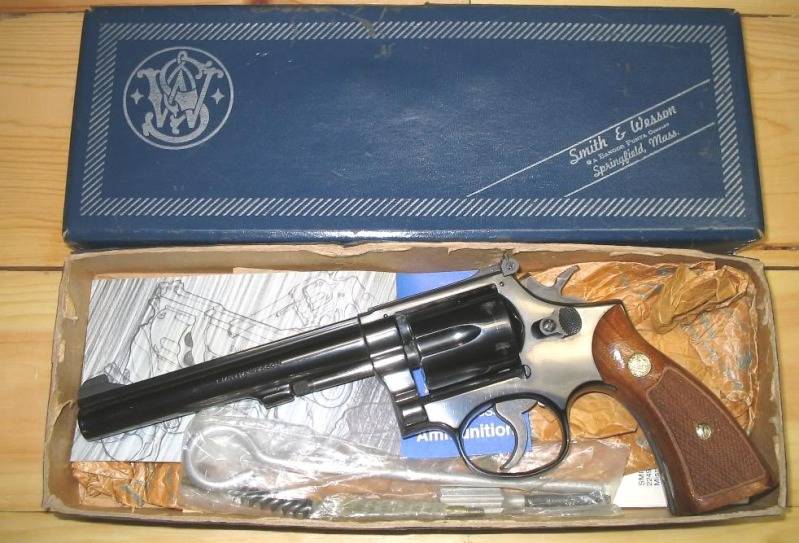
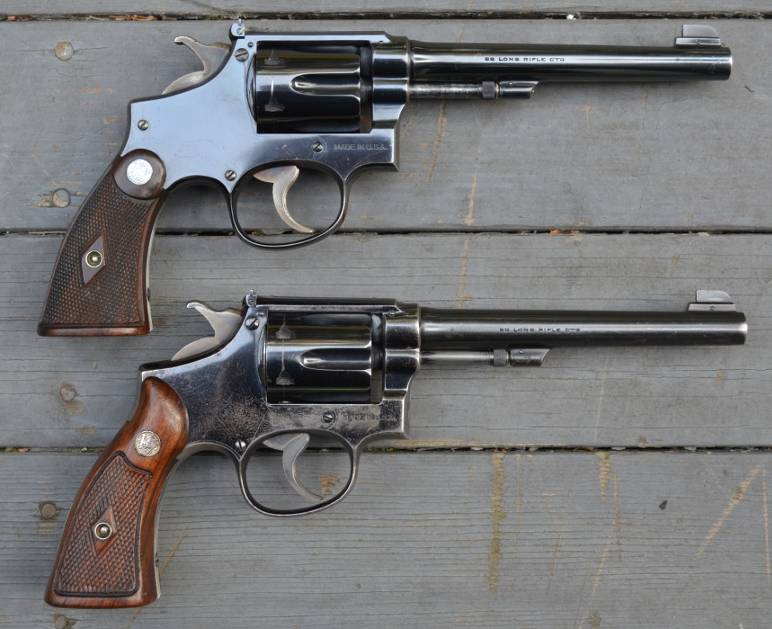
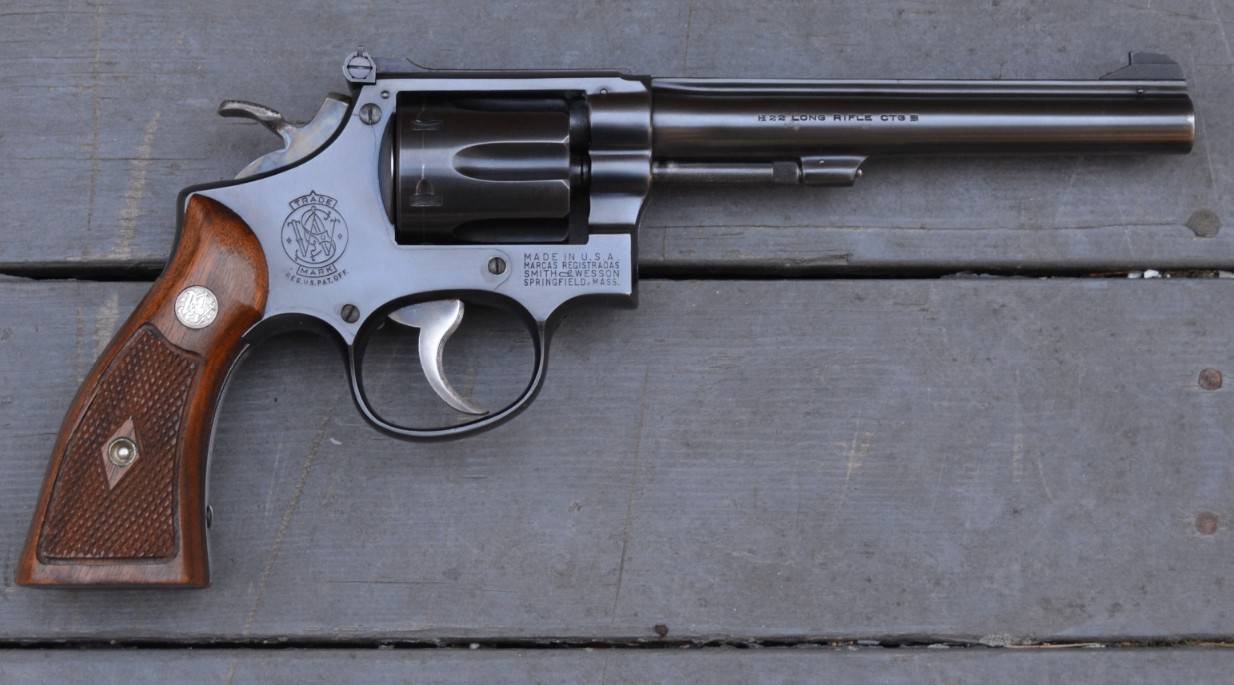
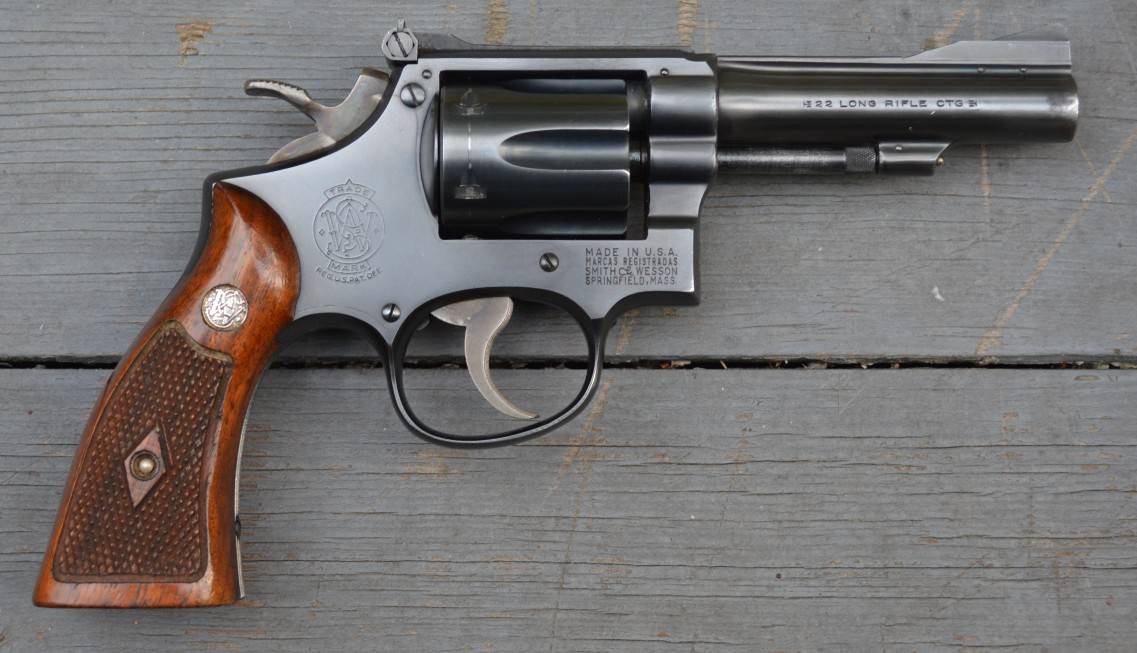
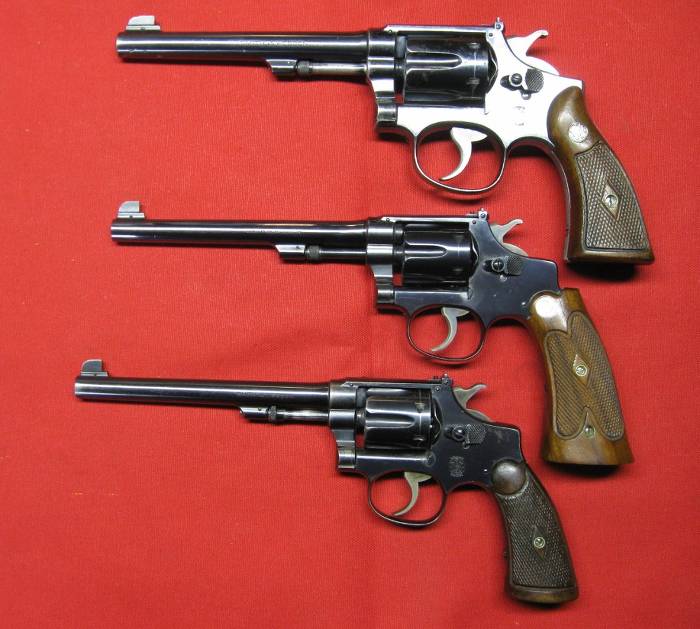
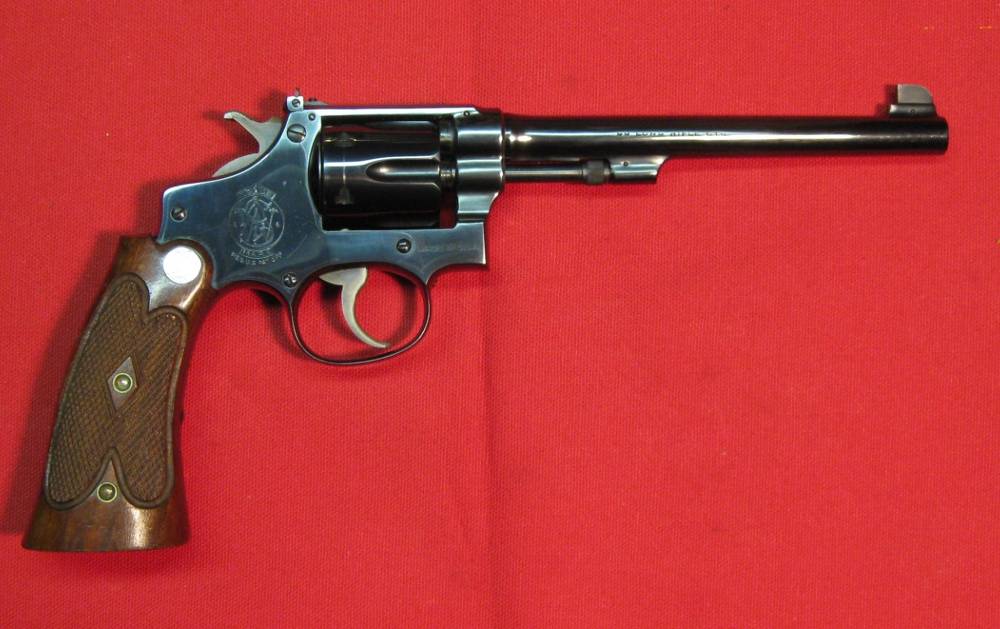
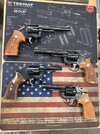
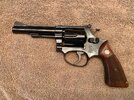
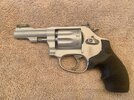
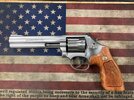
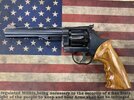
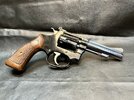
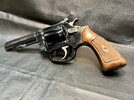
Funny, but while in a LGS recently they had a near-mint model 43 from 1974 that I hadn't realized was so important to own until seeing it that day. Original box, serial-matching grips, paperwork (including un-completed warranty card), VCI paper and still-sealed toolkit all included. Finally got to bring it home a few days ago. It is nearly flawless, with even the turn line being nearly non-existent.I bought this kit gun at a gun show. It was tagged as a pre model 34 and the price was right. Got it home and kept thinking something didn’t seem right. Measured the barrel and got 3.5”. This left me stumped so I broke out the Standard Catalog and found the model 43, Airweight Kit Gun had a 3.5” barrel.I had forgotten about this model. Next I broke out a magnet to confirm.
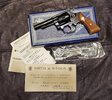
Puuurty!Funny, but while in a LGS recently they had a near-mint model 43 from 1974 that I hadn't realized was so important to own until seeing it that day. Original box, serial-matching grips, paperwork (including un-completed warranty card), VCI paper and still-sealed toolkit all included. Finally got to bring it home a few days ago. It is nearly flawless, with even the turn line being nearly non-existent.
View attachment 1188001

Funny, but while in a LGS recently they had a near-mint model 43 from 1974 that I hadn't realized was so important to own until seeing it that day. Original box, serial-matching grips, paperwork (including un-completed warranty card), VCI paper and still-sealed toolkit all included. Finally got to bring it home a few days ago. It is nearly flawless, with even the turn line being nearly non-existent.
View attachment 1188001
He has done work for me, first class work.Ron Mahovsky at Mahovsky Metalife did the plating.
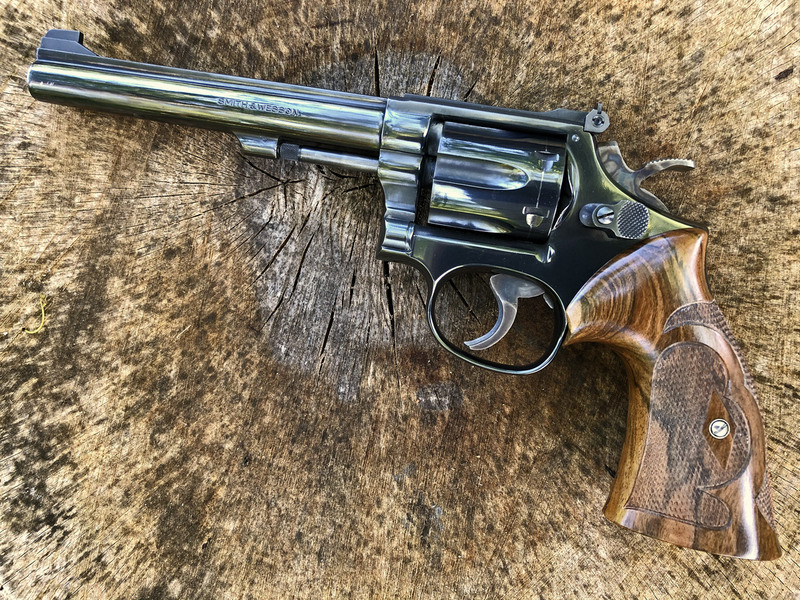
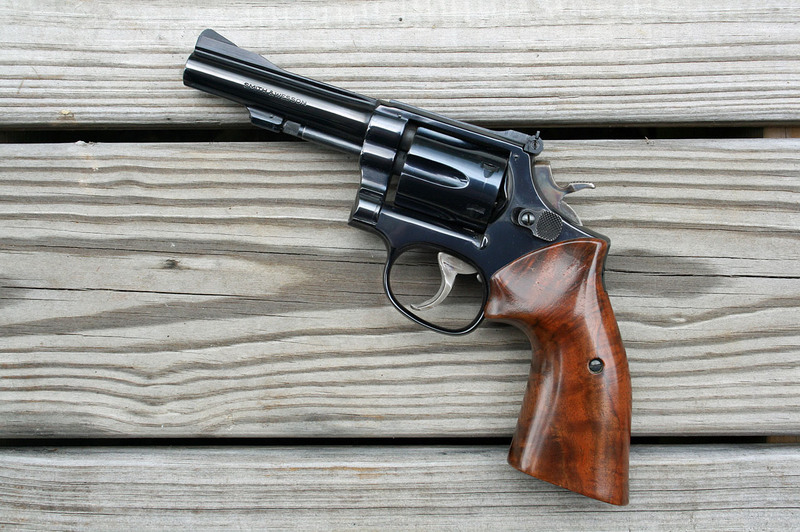
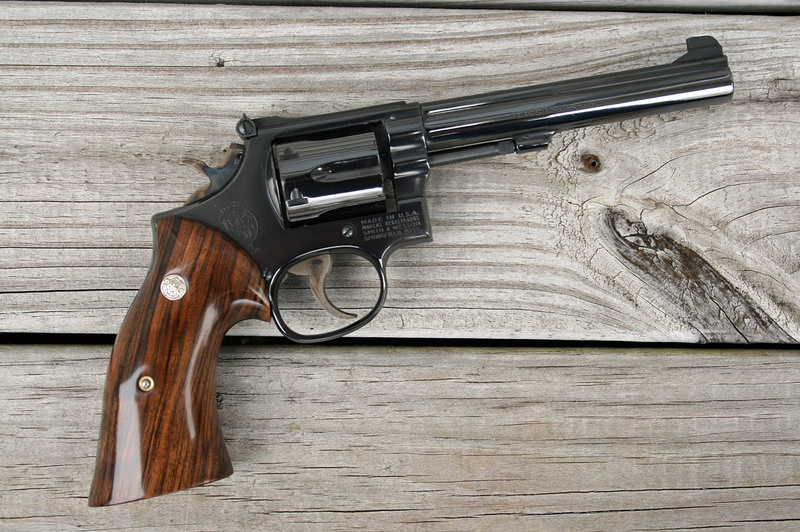
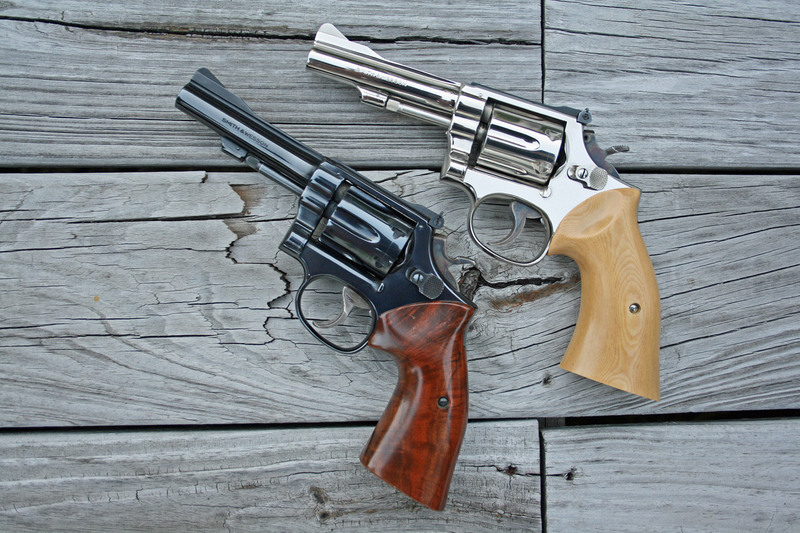
I've been thinking about this since the subject came up. The Model 35 originally was on an I frame and later models (35-1?) were on a J frame? Wouldn't a over-stamped 34-1 be a 35-1?Without looking up the picture on Guns Int'l. myself, does that revolver have a 6" barrel? Model 34 and Model 35 are the same (both I frame), except the M34 is called the 22/32 Kit gun and has either a 2" or 4" barrel. The M35 is called the Model of 1953 22/32 Target and has a 6" barrel only. S&W never wasted anything, and probably took a M34 frame to make into a M35, so they overstamped it. Dash-1's started in 1960 on both models, the M34 was discontinued in 1991, the M35 was discontinued in 1973. For it to be an overstamped M34, that gun was made somewhere between 1960 and 1973.

You probably paid a lot less!Looks just like mine, except I bought mine in 1975. I see you are getting all the goodies with yours, just like mine.

